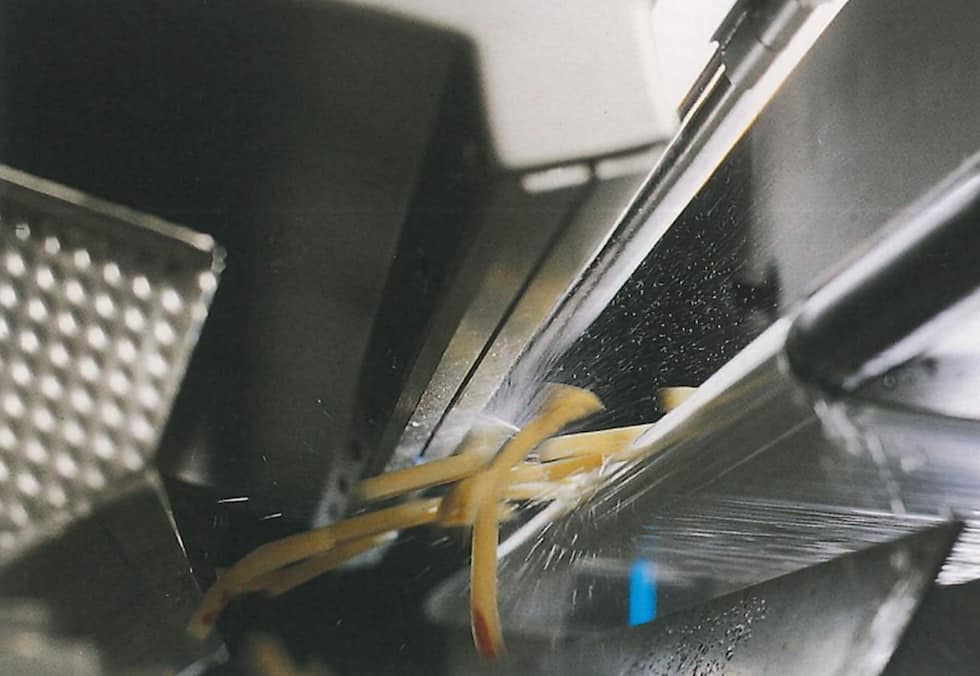
Earlier this year the Food Standards Agency launched a campaign called “Go for Gold”, designed to alert consumers to the dangers of a carcinogenic substance called acrylamide. This can be formed when starchy foods such as potatoes and bread are cooked at high temperatures.
Now a new technique, developed by Lien Smeesters, a researcher in the B-PHOT Brussels Photonics Team at the University of Brussels, alongside Tomra Sorting Solutions, has been designed to spot potatoes that will go on to form high levels of acrylamide, before they are cooked.
A similar sensor can also detect other carcinogenic contaminants – mycotoxins - which can be found in food stuffs including cereals, nuts and dried fruits.
Existing chemical analysis techniques used to spot harmful substances are typically slow and destructive, meaning the product cannot be used once it has been tested.
What’s more, carcinogenic substances can form in localised areas of the product. “This means that you could take a sample of bread, and the sample could be completely healthy, while in another part of the same loaf, there could be contamination present,” she said.
The new scanner will be integrated into food sorting machines built by Tomra, which has filed a patent on the technology. As the potatoes, or other food stuffs, travel along the conveyor belt, they are sent into free-fall, where they are illuminated by different lasers optimised to detect food stuffs and contaminants.
The infrared laser light passing through the food is scattered by the tissue inside, in a process known as spatially resolved spectroscopy.
Bad potatoes, with high levels of acrylamide precursors, will generate a different scattering signal to healthy potatoes.
The scattered light is analysed by a data processor to detect the individual fingerprint of each potato, and those that contain high levels of acrylamide precursor can be detected in milliseconds and removed from the production line with a burst of air.
These potatoes do not all have to be thrown away, however, as they may still be suitable for low temperature processes, such as in making mashed potatoes or soup, Smeesters said.





Glasgow trial explores AR cues for autonomous road safety
They've ploughed into a few vulnerable road users in the past. Making that less likely will make it spectacularly easy to stop the traffic for...